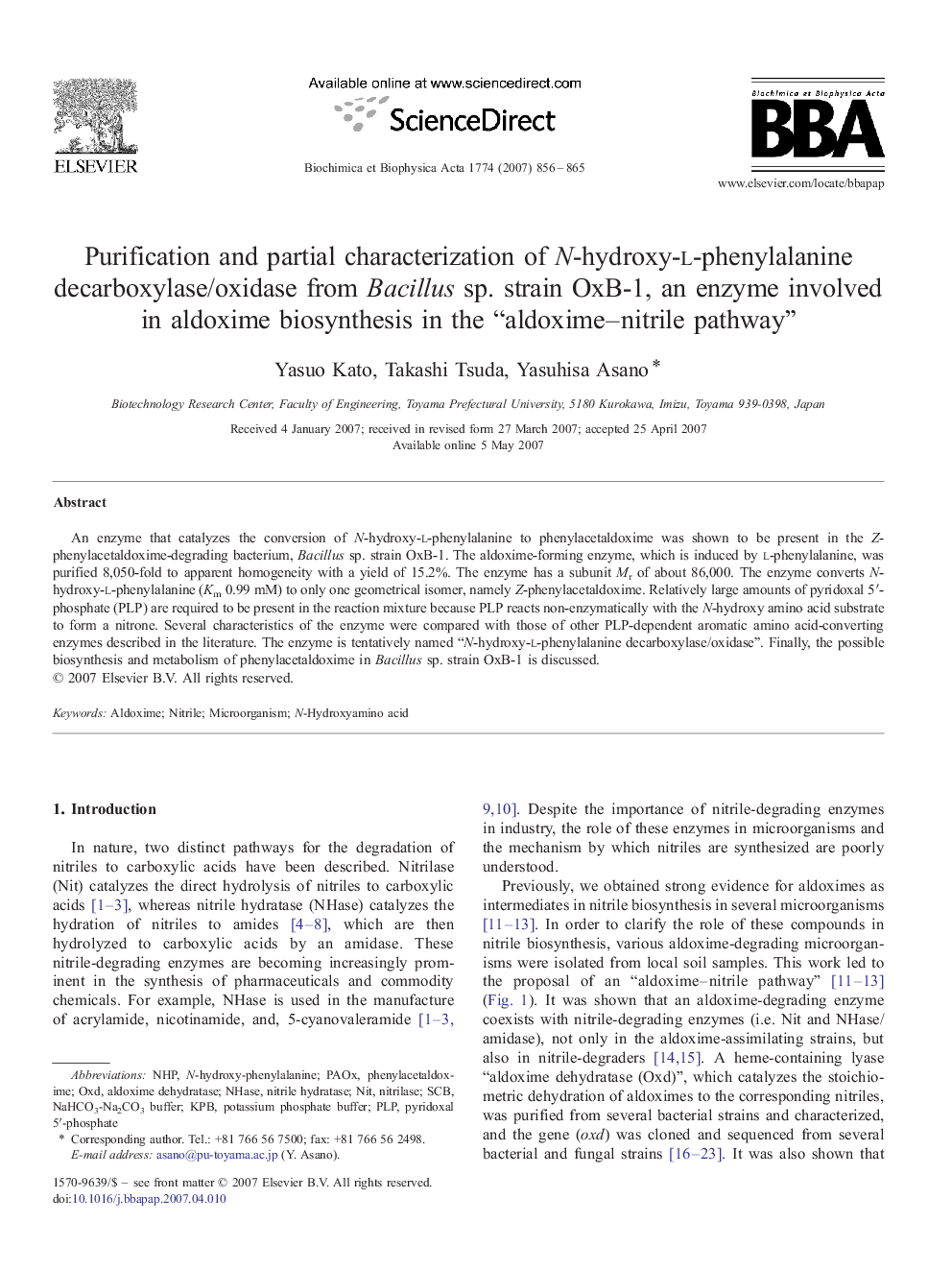| Article ID | Journal | Published Year | Pages | File Type |
|---|---|---|---|---|
| 1178378 | Biochimica et Biophysica Acta (BBA) - Proteins and Proteomics | 2007 | 10 Pages |
An enzyme that catalyzes the conversion of N-hydroxy-l-phenylalanine to phenylacetaldoxime was shown to be present in the Z-phenylacetaldoxime-degrading bacterium, Bacillus sp. strain OxB-1. The aldoxime-forming enzyme, which is induced by l-phenylalanine, was purified 8,050-fold to apparent homogeneity with a yield of 15.2%. The enzyme has a subunit Mr of about 86,000. The enzyme converts N-hydroxy-l-phenylalanine (Km 0.99 mM) to only one geometrical isomer, namely Z-phenylacetaldoxime. Relatively large amounts of pyridoxal 5′-phosphate (PLP) are required to be present in the reaction mixture because PLP reacts non-enzymatically with the N-hydroxy amino acid substrate to form a nitrone. Several characteristics of the enzyme were compared with those of other PLP-dependent aromatic amino acid-converting enzymes described in the literature. The enzyme is tentatively named “N-hydroxy-l-phenylalanine decarboxylase/oxidase”. Finally, the possible biosynthesis and metabolism of phenylacetaldoxime in Bacillus sp. strain OxB-1 is discussed.
